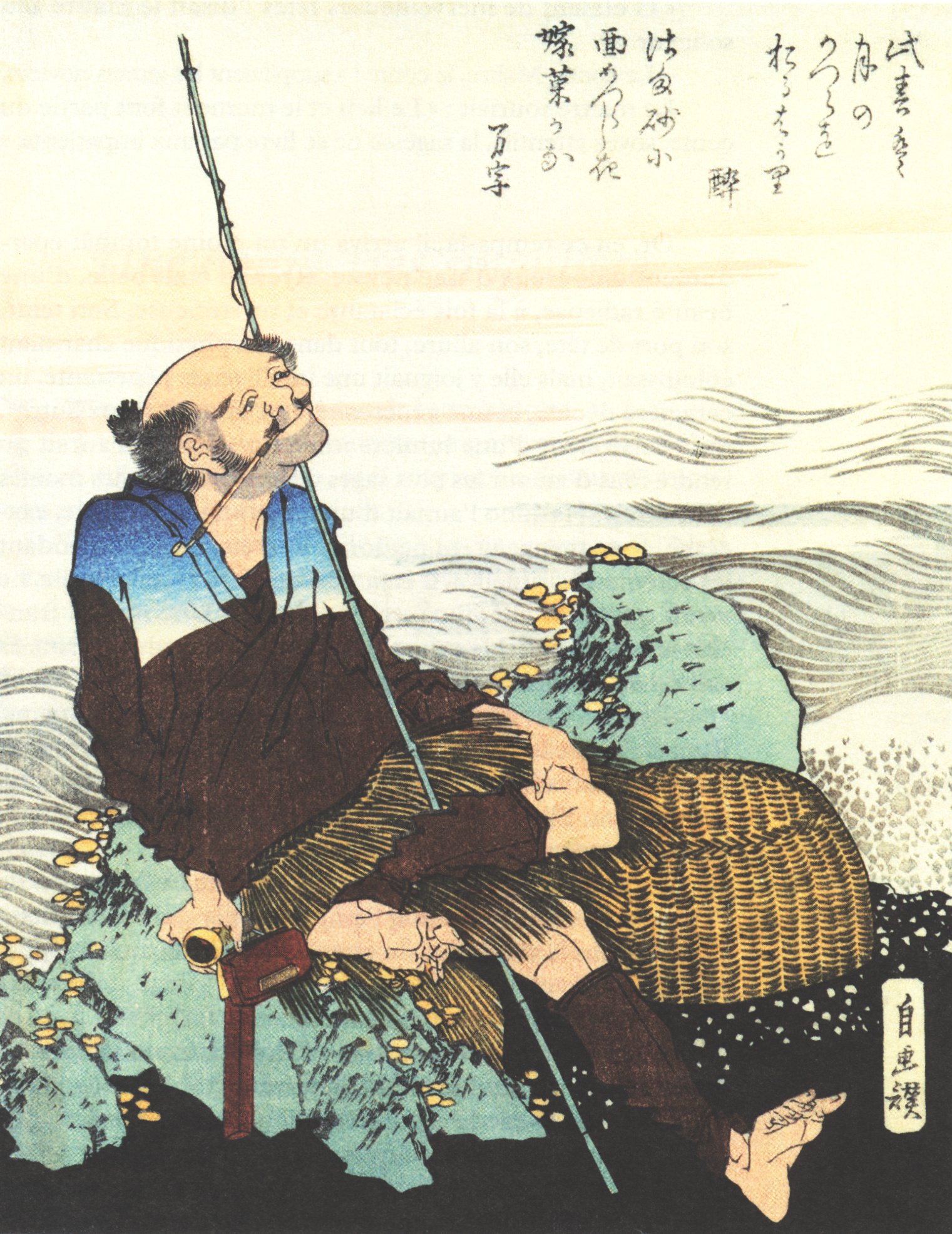Surimono on:
[Wikipedia]
[Google]
[Amazon]

 are a genre of
are a genre of
Surimono
on the website of the Art, Design & Architecture Museum Japanese words and phrases Ukiyo-e genres {{Japan-art-stub

 are a genre of
are a genre of Japanese woodblock print
Woodblock printing in Japan (, ''mokuhanga'') is a technique best known for its use in the ''ukiyo-e'' artistic genre of single sheets, but it was also used for printing books in the same period. Widely adopted in Japan during the Edo period (160 ...
. They were privately commissioned for special occasions such as the New Year
New Year is the time or day currently at which a new calendar year begins and the calendar's year count increments by one. Many cultures celebrate the event in some manner. In the Gregorian calendar, the most widely used calendar system to ...
. Surimono literally means "printed thing". Being produced in small numbers for a mostly educated audience of ''literati'', surimono were often more experimental in subject matter and treatment, and extravagant in printing technique, than commercial prints. They were most popular from the 1790s to the 1830s, and many leading artists produced them. One of the most famous woodblock artists who got his start from producing surimono was Suzuki Harunobu
Suzuki Harunobu ( ja, 鈴木 春信; ) was a Japanese designer of woodblock print art in the style. He was an innovator, the first to produce full-color prints () in 1765, rendering obsolete the former modes of two- and three-color prints. Haru ...
, credited with being the genius behind the later introduction (in the 1760s) of Nishiki-e ("brocade prints").
Use
In most cases, surimono were commissioned by poetry societies to illustrate the winning poem in a poetry contest judged by the master of the society. Such prints generally had a small format, often c. 205 × 185 mm, and the relief carving of theKanji
are the logographic Chinese characters taken from the Chinese script and used in the writing of Japanese. They were made a major part of the Japanese writing system during the time of Old Japanese and are still used, along with the subse ...
characters took a great deal of technical skill. Kabuki
is a classical form of Japanese dance-drama. Kabuki theatre is known for its heavily-stylised performances, the often-glamorous costumes worn by performers, and for the elaborate make-up worn by some of its performers.
Kabuki is thought ...
actors also commissioned surimono prints to commemorate important events in their careers, such as changes of name and stage debuts of their sons.
See also
*Ukiyo-e
Ukiyo-e is a genre of Japanese art which flourished from the 17th through 19th centuries. Its artists produced woodblock prints and paintings of such subjects as female beauties; kabuki actors and sumo wrestlers; scenes from history and folk ...
* Woodblock printing
Woodblock printing or block printing is a technique for printing text, images or patterns used widely throughout East Asia and originating in China in antiquity as a method of printing on textiles and later paper. Each page or image is creat ...
* Woodcut
Woodcut is a relief printing technique in printmaking
Printmaking is the process of creating artworks by printing, normally on paper, but also on fabric, wood, metal, and other surfaces. "Traditional printmaking" normally covers only t ...
* Frank Lloyd Wright
Frank Lloyd Wright (June 8, 1867 – April 9, 1959) was an American architect, designer, writer, and educator. He designed more than 1,000 structures over a creative period of 70 years. Wright played a key role in the architectural movements o ...
was a collector of surimono
References
*Further reading
*External links
Surimono
on the website of the Art, Design & Architecture Museum Japanese words and phrases Ukiyo-e genres {{Japan-art-stub